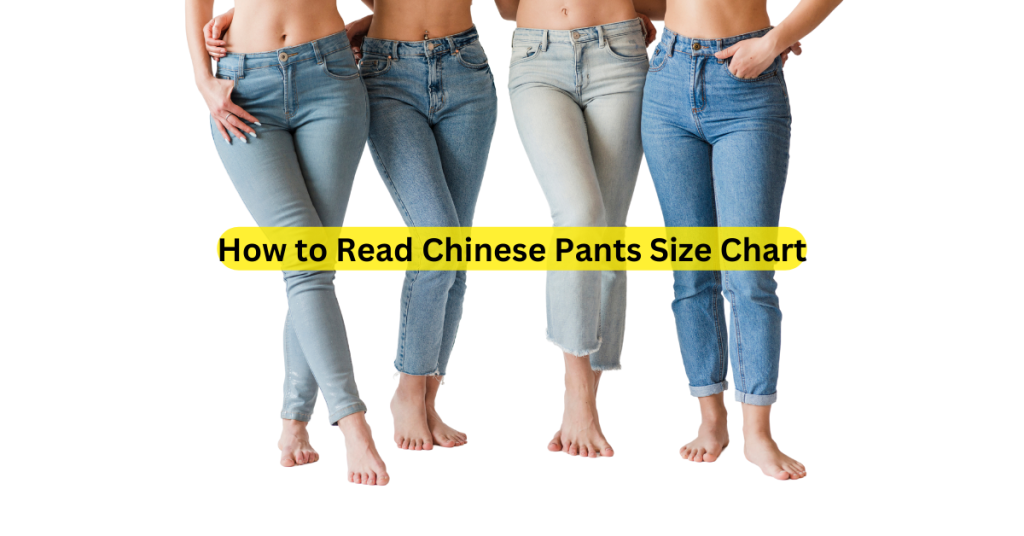How to Choose the Best Bed Sheets for Your Mattress
When it comes to creating the perfect sleep environment, choosing the right bed sheets plays a crucial role. After all, your bed sheets are in direct contact with your skin throughout the night. They influence not only how comfortable your bed feels but also the quality of your sleep. With so many types of materials, thread counts, and sizes available, selecting the best bed sheets for your mattress can feel overwhelming.
Don’t worry, though this guide will break down everything you need to know to make an informed decision and find the perfect set of sheets for your mattress. We will cover the following essential topics to help you select the best bed sheets for your mattress:
- Why bed sheets matter
- The different types of bed sheet fabrics
- How to determine the right size sheets for your mattress
- Thread count: Is it really important?
- Tips for choosing the right sheets based on your preferences
- Caring for your bed sheets to prolong their life
Additionally, we’ll answer 9 frequently asked questions to help guide you through the process of choosing the perfect set of bed sheets.
Why Bed Sheets Matter
Before diving into the specifics of bed sheets, let’s first understand why they are important. The primary role of bed sheets is to protect your mattress, but they also affect your comfort during sleep. The right set of sheets can enhance the softness of your bed, help regulate your body temperature, and contribute to a good night’s sleep. On the other hand, sheets that are too rough, too hot, or poorly fitted can disrupt your sleep and leave you feeling uncomfortable.
Benefits of Choosing the Right Bed Sheets:
- Comfort: Soft, breathable sheets provide a cozy sleeping environment.
- Temperature Regulation: The right fabric can keep you warm during the winter and cool in the summer.
- Skin Health: High-quality sheets made from natural fibers can be gentle on the skin.
- Durability: The right material can withstand wear and washing, saving you money in the long run.
Types of Bed Sheet Fabrics
One of the most important decisions when choosing bed sheets is the fabric. Different fabrics offer different benefits, so it’s essential to choose one that suits your preferences and needs. Let’s take a look at the most common types of bed sheet fabrics.
1. Cotton
Cotton is one of the most popular choices for bed sheets, and for good reason. It’s soft, breathable, and comfortable to sleep on. Cotton sheets are perfect for hot sleepers or anyone looking for sheets that can wick away moisture. They come in a variety of weaves, such as percale and sateen, which affect the texture and feel of the sheets.
- Percale Cotton: Percale sheets are tightly woven and have a crisp, cool feel. They are breathable and perfect for warmer climates or hot sleepers.
- Sateen Cotton: Sateen sheets have a smoother, silkier feel thanks to their special weave. They’re soft to the touch and tend to be more resistant to wrinkles.
- Egyptian Cotton: Known for its luxurious feel, Egyptian cotton is a high-quality variety that’s extra soft, durable, and long-lasting.
2. Linen
Linen sheets are made from flax plants and are known for their relaxed, breathable, and natural feel. They are great for people who tend to sleep hot or live in warmer climates. Linen sheets are naturally moisture-wicking, which helps keep you cool and dry throughout the night. However, linen sheets can feel a bit rough at first but soften after several washes.
Pros: Highly breathable, moisture-wicking, gets softer with each wash, ideal for hot climates. Cons: Wrinkles easily, may feel a bit rough when new.
3. Silk
Silk sheets are incredibly smooth and luxurious. They feel soft and cool against the skin, making them a great choice for those who want to indulge in a touch of luxury. Silk is also hypoallergenic, making it ideal for sensitive skin. However, silk sheets require delicate care, such as hand washing or dry cleaning, which can be a drawback for some.
Pros: Soft, luxurious feel, temperature-regulating, hypoallergenic. Cons: Expensive, requires careful care (dry cleaning), less durable.
4. Microfiber
Microfiber sheets are made from finely woven synthetic fibers, often polyester. These sheets are soft, affordable, and come in a variety of colors and patterns. Microfiber is also hypoallergenic and resistant to wrinkles. However, they are not as breathable as natural fibers like cotton or linen, so they may not be the best choice for hot sleepers.
Pros: Affordable, soft, durable, wrinkle-resistant. Cons: Less breathable, may trap heat, not as eco-friendly as natural fibers.
5. Flannel
Flannel sheets are made from cotton or a cotton blend that is brushed to create a soft, warm, and fuzzy texture. They’re the perfect choice for colder months or people who tend to get cold while sleeping. Flannel sheets provide extra warmth and comfort in winter but can be too warm for summer months.
Pros: Cozy, warm, soft, great for winter. Cons: Too warm for hot sleepers, can pill over time.
6. Bamboo
Bamboo sheets are made from bamboo fibers, which are spun into a fabric that’s soft, breathable, and naturally antibacterial. Bamboo sheets are ideal for hot sleepers as they are moisture-wicking and keep you cool. They are also environmentally friendly, as bamboo is a sustainable material.
Pros: Soft, breathable, eco-friendly, moisture-wicking. Cons: Can be expensive, less durable than cotton.
How to Determine the Right Size Sheets for Your Mattress
Choosing the right size bed sheets for your mattress is essential to ensure a comfortable fit. If the sheets are too small, they may not stay in place, and if they’re too large, they can bunch up or feel loose.
Standard Mattress Sizes:
- Twin: 38” x 75”
- Twin XL: 38” x 80”
- Full (Double): 54” x 75”
- Queen: 60” x 80”
- King: 76” x 80”
- California King: 72” x 84”
When purchasing sheets, always check the label to ensure they are designed for your mattress size. Additionally, some sheets come in deep pocket options, which are designed to accommodate thicker mattresses or mattresses with added toppers.
How to Measure Your Mattress
If you have a mattress with unusual dimensions or a custom bed, measuring the mattress before buying sheets is important. Use a tape measure to check the length, width, and depth of your mattress to ensure the sheets will fit properly.
Thread Count: Is it Really Important?
Thread count refers to the number of threads woven into one square inch of fabric. Higher thread counts are often associated with softer and more durable sheets, but thread count is not the only factor that determines sheet quality.
- Ideal thread count: 200-800 thread count is typically ideal for cotton sheets. Anything higher than 800 may not necessarily result in better quality and can often be a marketing tactic.
- Fabric type matters: The quality of the fibers used in the sheets (such as long-staple cotton) is just as important, if not more, than thread count.
In short, focus on the material and weave of the sheets, and don’t get too hung up on thread count alone.
Tips for Choosing the Right Sheets Based on Your Preferences
Now that you have a general understanding of the fabrics, thread counts, and sizes, let’s discuss how to choose the right sheets for your specific needs.
1. Consider Your Climate
If you live in a hot climate, you may want to look for breathable sheets made from cotton, linen, or bamboo. These materials allow for better airflow and moisture-wicking, which will help regulate your body temperature during the night.
In colder climates, opt for flannel or thick cotton sheets to provide extra warmth and insulation.
2. Consider Your Skin Sensitivity
If you have sensitive skin or allergies, consider hypoallergenic materials such as bamboo or silk. These fabrics are gentle on the skin and can reduce irritation caused by common allergens such as dust mites.
3. Choose a Weave That Fits Your Preference
- Percale weave: Ideal for those who like a crisp, cool feel to their sheets.
- Sateen weave: Offers a smoother, silk-like feel, perfect for those who prefer a softer, more luxurious texture.
- Jersey knit: Similar to a T-shirt, this fabric is soft, stretchy, and comfortable for a more relaxed feel.
4. Think About Maintenance
Some materials, like silk or linen, require delicate care, such as hand washing or dry cleaning. If you prefer low-maintenance sheets that can be thrown in the wash with ease, go for cotton or microfiber options.
5. Color and Design
Don’t forget about the aesthetics! Bed sheets come in a variety of colors and patterns to suit your style. Choose colors that complement your bedroom décor and make the room feel welcoming. If you prefer a minimalist look, opt for neutral shades like white, grey, or beige. For a more vibrant room, select bold patterns or colorful sheets to add personality to the space.
Frequently Asked Questions (FAQs)
1. What is the best fabric for bed sheets?
Cotton is generally the best choice due to its softness, breathability, and durability. For a more luxurious feel, consider Egyptian cotton or sateen weaves.
2. How often should I wash my bed sheets?
It’s recommended to wash your bed sheets every 1-2 weeks to maintain hygiene and comfort.
3. Do I need deep-pocket sheets for a thick mattress?
Yes, if your mattress is thicker than average or if you have a mattress topper, deep-pocket sheets are necessary to ensure a snug fit.
4. Are higher thread counts always better?
Not necessarily. While higher thread counts may indicate softness, the quality of the fabric (e.g., Egyptian cotton) is more important than the thread count alone.
5. What is the most breathable material for bed sheets?
Linen, cotton, and bamboo are some of the most breathable materials for bed sheets, ideal for hot sleepers.
6. Can I mix and match different fabric types for bed sheets?
Yes, mixing different fabric types like cotton sheets with a linen duvet cover can create an interesting and layered look while maintaining comfort.
7. How can I keep my bed sheets soft?
Wash your bed sheets with a mild detergent and avoid over-drying them in the dryer. Line drying or tumble drying on low heat can help preserve their softness.
8. Can I use queen sheets on a full-size mattress?
Queen sheets may be too large for a full mattress, leading to extra fabric bunching up. It’s best to use sheets that match the mattress size.
9. Do bamboo sheets wrinkle easily?
Bamboo sheets tend to resist wrinkles more than cotton, but they can still wrinkle if not properly cared for.
Conclusion
Choosing the best bed sheets for your mattress is essential for comfort and a good night’s sleep. The right fabric, size, and weave can make all the difference in how your bed feels and how well you rest. Consider your personal preferences, climate, and the level of maintenance you’re willing to handle when selecting your sheets. With the right sheets, your bed will become the ultimate haven for relaxation and rejuvenation.





